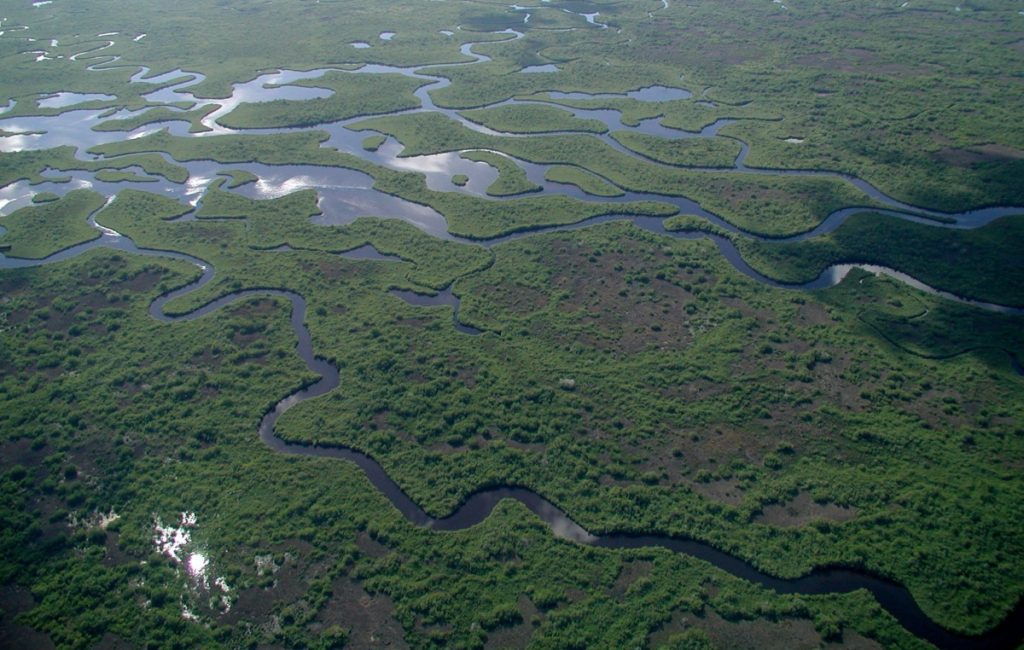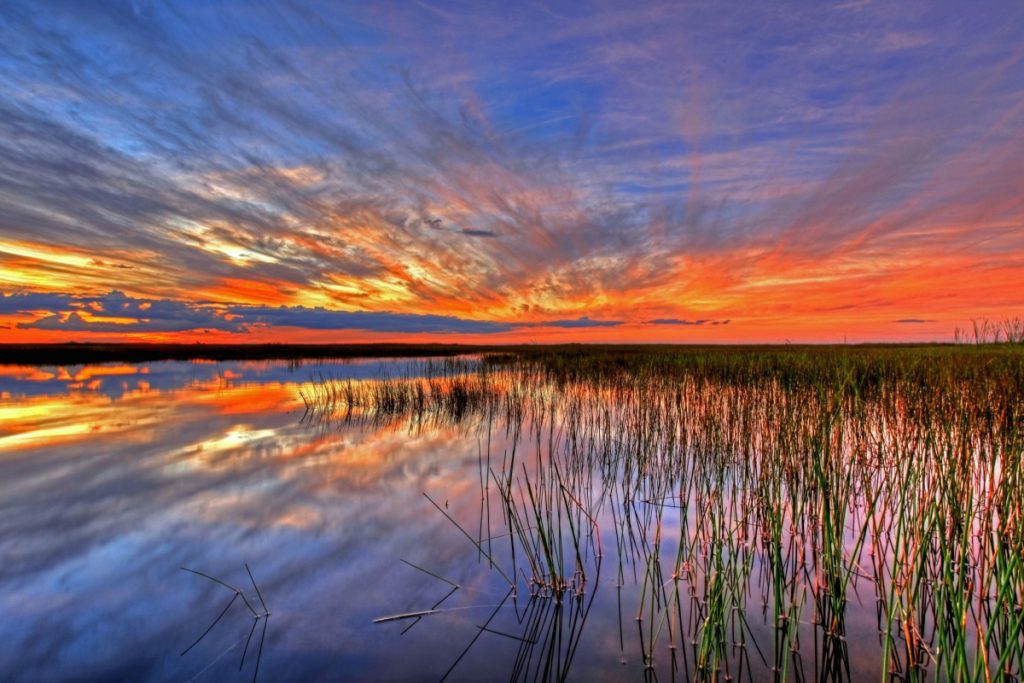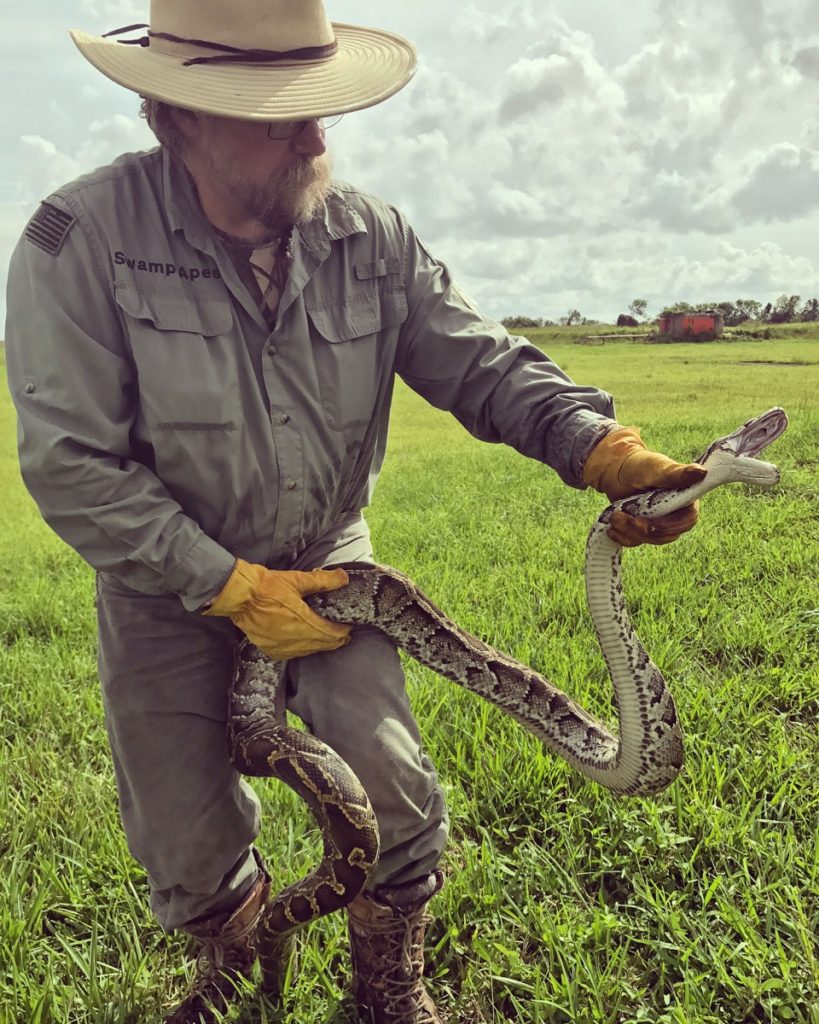Everglades National Park stands as one of North America’s great ecosystems and parks, taking its place on the podium alongside Yellowstone, Yosemite and Grand Canyon. But the Everglades lacks the grandeur of those other parks—which makes its creation and existence so much more meaningful.

The southern end of Florida is more water than land. Water lies just below or above the surface of the soil for hundreds of miles in all directions, originally from Orlando south. The area was home to Native Americans for thousands of years before the Spanish came and spread diseases that wiped out the original inhabitants. Later, other Indian groups, most notably Seminoles, were forced south to live there, but never in large numbers or widely dispersed.
In fact, it wasn’t until the late 1800s that anyone thought twice about the area we now call the Everglades. It was a swamp, and swamps were useless, breeding sites for noxious insects, reptiles and plants. “A swamp is a swamp,” said famous park developer Frederick Law Olmstead . As coastal development accelerated, so did attempts to drain the edges of the swamp and divert water into canals. Much of the swamp was transformed, becoming agricultural lands that fed the Florida economy.
Some folks began to appreciate the huge swamp for what it was—a biodiversity miracle. Vast quantities of wildlife lived in the swamp. And the variety—more than 360 bird species winter there—was astounding. The Florida Federation of Women’s Clubs, led by May Mann Jennings, wife of the Florida governor, persuaded the U.S. to create the small Royal Palm National Park in 1916. The federation managed the park until 1947.

But things really started moving when a young landscape architect, Ernest Cole, moved to Miami in 1925. He was an outdoor enthusiast and was immediately entranced by the nearby wetlands. He began lobbying Stephen Mather, the first National Park Service Director, to create a big park (learn more about Mather here). Cole’s persistence has earned him the nickname, “Father of the Everglades.” But the park wasn’t a scenic masterpiece like the popular western park. Not until a delegation of officials took a blimp ride (yes, in the Goodyear Blimp!) over the swamp did they understand the habitat value of the area and join Cole in his advocacy for a new park. On May 30, 1934, Congress passed and President Roosevelt signed an act to create Everglades National Park, specifically for “the preservation intact of the unique flora and fauna and the essential primitive natural conditions now prevailing in this area.” This was not a park dedicated for tourism, but for biodiversity conservation.
Thirteen more years passed until enough land was acquired—now just over 1.5 million acres—and the park became a reality. On December 6, 1947, President Truman dedicated the park, saying, “Here is land, tranquil in its quiet beauty, serving not as the source of water, but as the last receiver of it. To its natural abundance we owe the spectacular plant and animal life that distinguishes this place from all others in our country.”
The wisdom of those early leaders is evident today. Everglades National Park preserves the largest subtropical wetland in North America, housing nine distinct habitats. It is an UNESCO Biosphere Reserve, a World Heritage Site, and a Wetland of International Importance—one of only three locations in the world to have all three designations. Surprisingly, it is not one of the most visited national parks, averaging about 1 million visitors per year. All the better, perhaps, for the preservation of this unique ecosystem.

The Everglades has many problems, however. For many years, it was on UNESCO’s list of endangered World Heritage Sites (thankfully, now off that list). Diversion of freshwater and draining were two major issues, both because of the lack of freshwater itself and because of salt-water intrusion from the ocean margins. But recent efforts have focused on re-establishing natural water flows. Invasive species are a constant issue, as animals and plants escaped or released from captivity find a welcome home in the swamps. The massive increase in the population of Burmese pythons is a common news story.
It is a huge ecosystem, however, and when the forces of nature operate on such a large scale, the insults of humans are hardly strong enough to persist. Let’s hope so. And let’s hope that the images so ably recorded by Marjorie Stoneman Douglas continue to be the images we all experience: “The miracle of the light pours over the green and brown expanse of saw grass and of water, shining and slow-moving below, the grass and water that is the meaning and the central fact of the Everglades of Florida. It is a river of grass.”
References:
Holleran, Patrick. Everglades National Park. Park vision. Available at: http://www.shannontech.com/ParkVision/Everglades/Everglades.html. Accessed May 2, 2019.
National Park Service. Ernest F. Coe, Everglades National Park. Available at: https://www.nps.gov/ever/learn/historyculture/cf-coe.htm. Accessed May 2, 2019.
Public Broadcasting Service. Everglades National Park. Available at: http://www.pbs.org/nationalparks/parks/everglades/. Accessed May 2, 2019.
U.S. Department of the Interior. 2017. 10 Things You Didn’t Know About Everglades National Park. Blog, 12/5/2017. Available at: https://www.doi.gov/blog/10-things-you-didnt-know-about-everglades-national-park. Accessed May 2, 2019.
U.S. Government Printing Office. 1934. An Act To provide for the establishment of the Everglades National Park in the State of Florida and for other purposes. Federal Register, May 30, 1934. Available at: https://www.loc.gov/law/help/statutes-at-large/73rd-congress/session-2/c73s2ch371.pdf. Accessed May 2, 2019.
